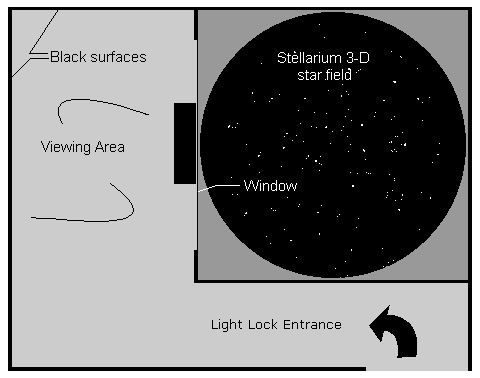|
 The five foot diameter Stellarium that was on display at the NASA-Ames research center was a traveling exhibit designed as a mid sized technology demonstrator. We loaned it to NASA without cost in support of the Origins program. The original three month loan was extended for over two years. The five foot diameter Stellarium that was on display at the NASA-Ames research center was a traveling exhibit designed as a mid sized technology demonstrator. We loaned it to NASA without cost in support of the Origins program. The original three month loan was extended for over two years.
This second generation Stellarium was also displayed at the 1996 convention of four regional planetarium associations, “Stars on the Border,” in El Paso, Texas. In 1994 it appeared at the Association of Science and Technology Centers convention in Portland, Oregon. It also traveled to New Mexico, Amarillo, Oklahoma, and Kansas for demonstrations.
In order to get the best possible appearance and greatest durability a number of improvements were made over earlier maps. The largest single improvement was the use of three independent light units to obtain the best possible optical performance. The result was the best star field made up to that time.
About the time that this map was being built vastly improved materials were becoming available. The Stellarium in Somerville, New Jersey was the first built using these. Stellarium star fields improved considerably. The five foot transportable Stellarium no longer represents the state of the art. It was retired from service after its display at NASA-Ames.
|

